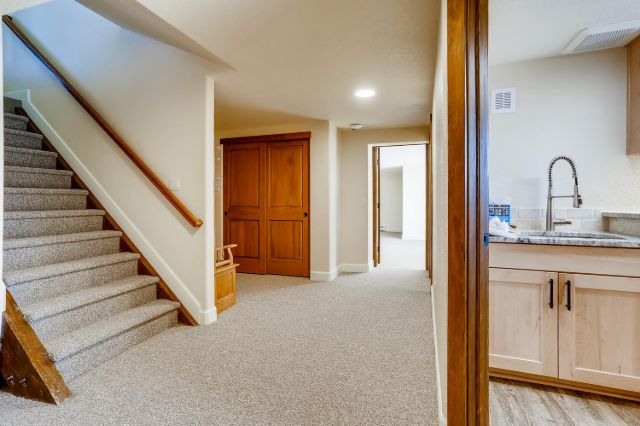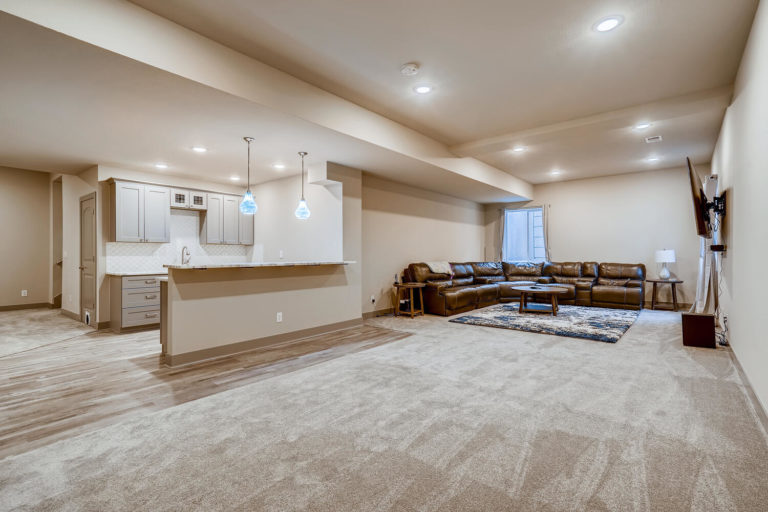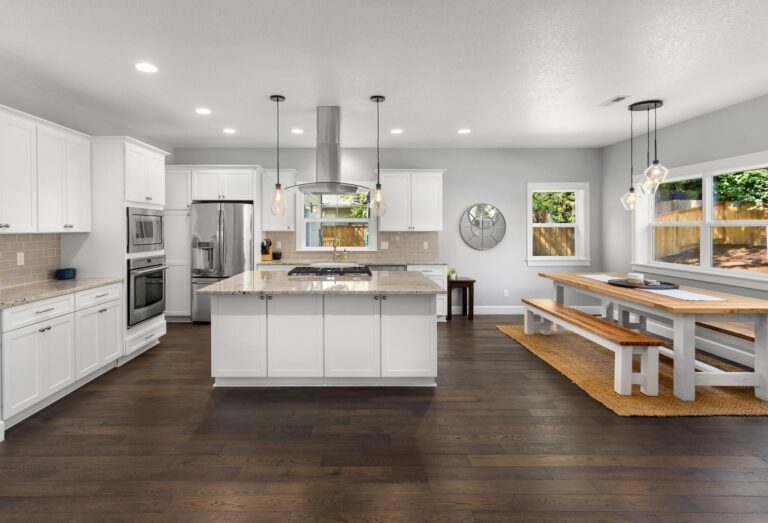8 Things to Consider Before Finishing Your Basement
While an unfinished basement works great as extra storage space, your basement could be used much more effectively if it were finished. A lower-level remodel can transform that under-utilized space into an additional living area, such as a home theater, craft room, or playroom, which your family will love to hang out in. However you plan to use the extra space, a finished basement ensures your home’s lower level doesn’t go to waste. Besides expanding your home’s functional space, finishing a basement can give the property’s value a major boost. To pull off a successful basement remodel, proper planning is essential. Here’s what to expect when you finish a basement.
ROI
Finishing a basement can be a good investment. According to cost versus value surveys conducted annually by Remodeling magazine, the average return on investment for a basement project nationally is currently around 75 cents on the dollar. A basement project is also likely to add new functionality to your home: more bedrooms, more efficient storage, and more space to entertain.
Light
Where possible, plan for windows and doors that can let natural light into your basement. Make sure openings are cut before other work begins, and seal off the rest of the house from the resulting masonry dust. Before creating any new windows or doors, have a building professional make sure the surrounding walls can take on the increased structural load.
Safety
Create beautiful and safe access to your finished basement with stylish stair handrails. You should also beef up walls supporting handrails, and keep handrails in place after the building inspector has signed off on the project.
You should plan ahead for emergencies when finishing a basement. Local building codes may demand egress windows in order for a basement room to be considered a bedroom, and an enclosed closet may also be required. Egress windows must be large enough for a firefighter in full gear to get into a burning house and for occupants to safely escape if stairways are blocked by fire. Another egress option is to add hinged outside access doors.
Moisture
Merely installing a dehumidifier can actually create problems by drawing water through foundation walls. To prevent moisture in a finished basement, ensure good drainage off your roof and away from your foundation, provide good ventilation of bathrooms and kitchens to the outside, and don’t open windows during humid months. Along with breathable insulation, a vapor retardant should be installed between interior stud walls and floors and between foundation walls and floor slabs.
Finishes
Not all flooring can (or should) be used in a finished basement. Solid wood is one example; even small fluctuations in moisture levels can cause buckling and splitting. Shop for products such as vinyl planks, ceramic tile, and engineered wood flooring that can be used below grade and still achieve the look you want.
Drop ceiling tiles work well in basements because they can be individually moved to access plumbing pipes or electrical hookups if needed. An installed drywall ceiling is another good option, but remember that ceiling textures can easily flake off. Regardless of the style you select, remember that the highest level of your basement ceiling is the same height as the lowest hanging pipe, duct, or wire.
Heating
Your home’s heating, ventilating, and air-conditioning systems may have been installed based on upper-level requirements. Make sure an HVAC contractor validates that you have the right equipment to serve the basement as well. Otherwise, you could reduce the equipment’s life span.
Radon
When planning to finish a basement, it is essential to test for radon. Radon is an odorless radioactive gas that seeps into basements from surrounding soils. Uncontrolled, it can expose you and your family to the equivalent of 200 chest x-rays annually. Test for it with charcoal-base collectors, or hire a licensed radon contractor. Local utility companies may offer radon testing. Mitigating radon may involve sealing cracks and surfaces or installing ventilators.
See what Timberstone Remodeling can do for your project!
Contact us today.



